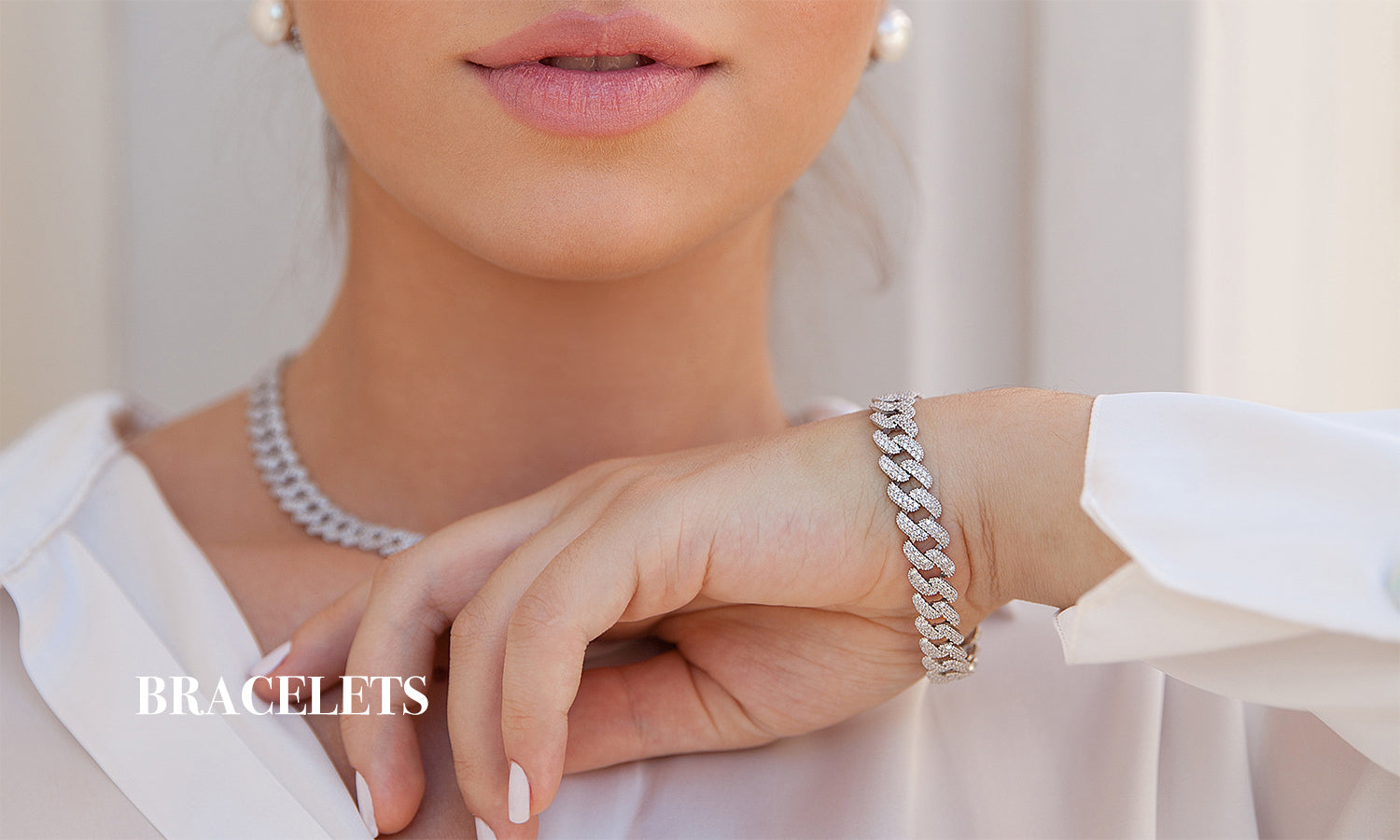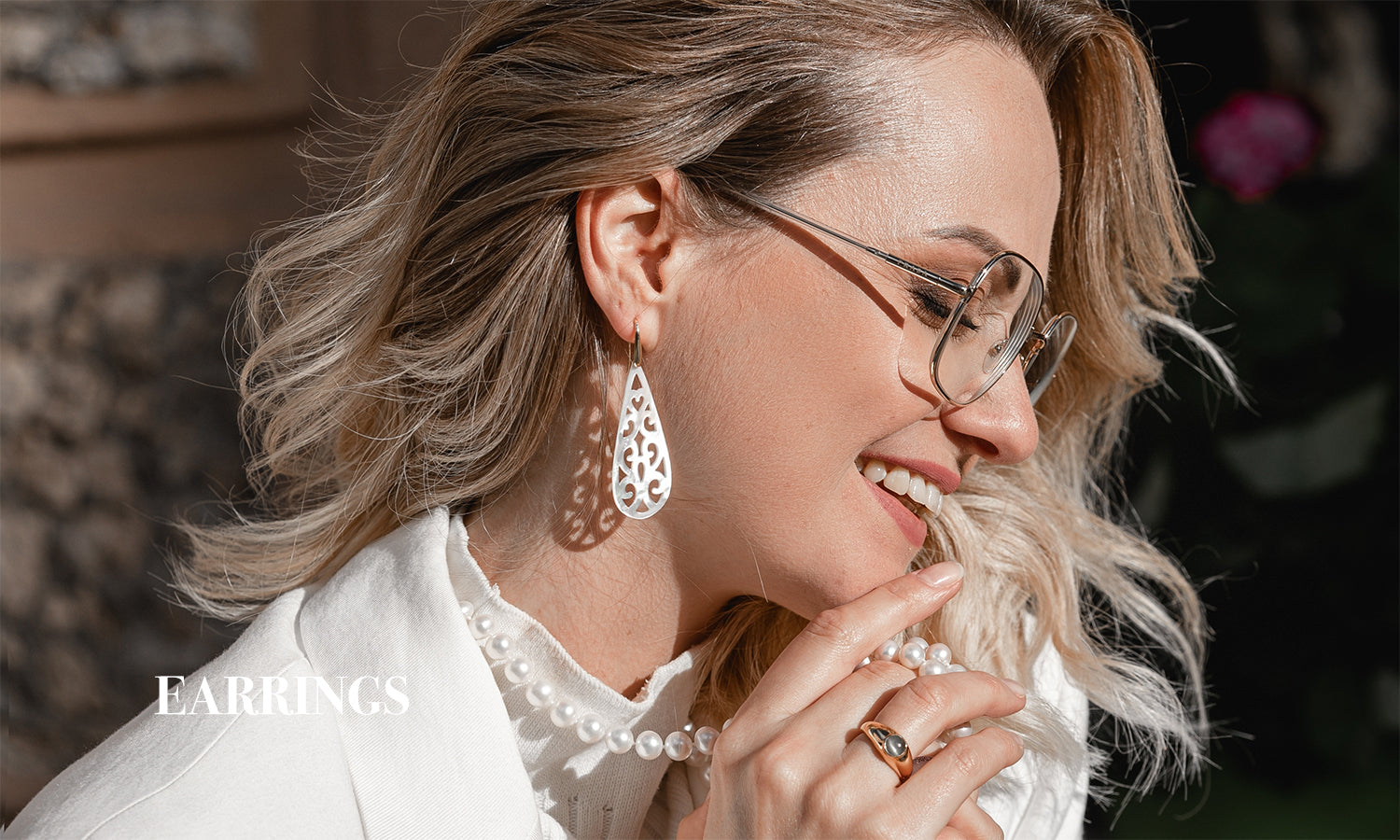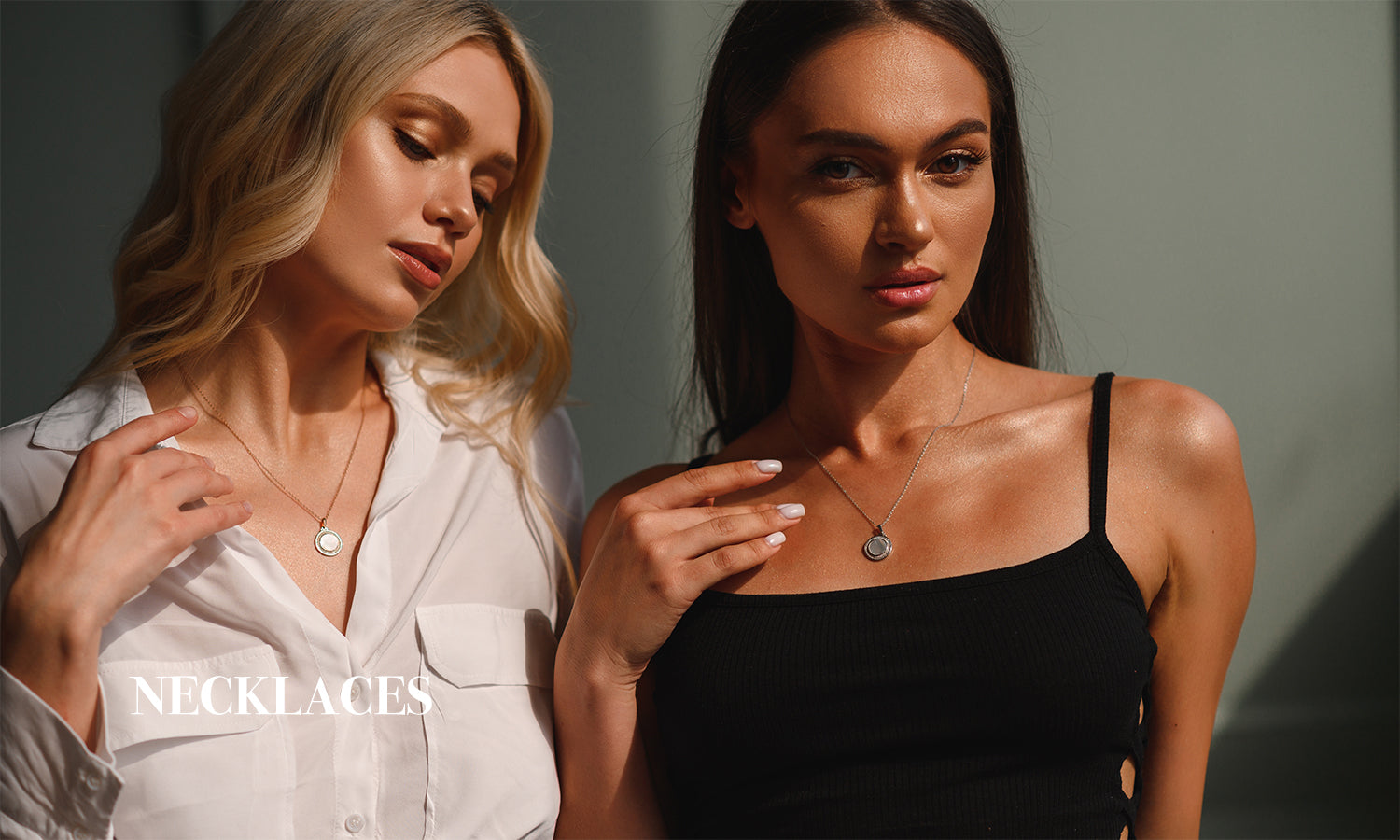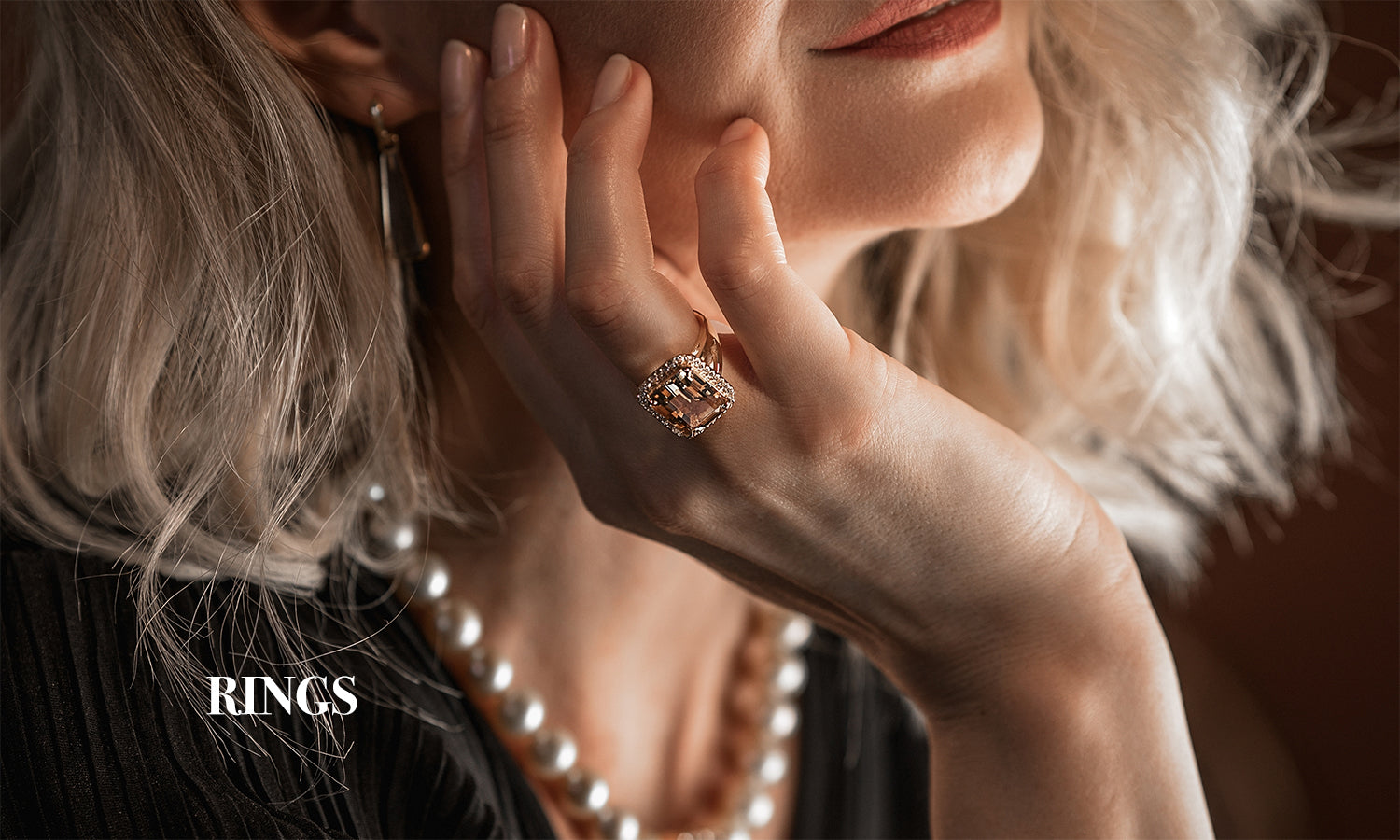
History of Viking Jewelry: From Ancient Times to Modern Fashion
Share
Viking jewelry has fascinated historians, archaeologists, and fashion enthusiasts alike for centuries. From its humble beginnings as personal adornment in the early medieval period to its influence on modern fashion, Viking jewelry has stood the test of time. This article explores the origins, evolution, and resurgence of Viking jewelry in contemporary culture.
|
Aspect |
Details |
|
Origins |
Viking jewelry dates back to the 8th-11th centuries and was made from bronze, silver, gold, and iron. It symbolized status, wealth, and religious faith. |
|
Iconic Pieces |
Brooches, Thor’s hammer pendants, arm rings, and bracelets were prominent. Each piece often carried deep symbolic meaning. |
|
Symbolism |
Designs included Norse mythology, animal art styles, and runic inscriptions, reflecting the Viking worldview. |
|
Craftsmanship |
Techniques like engraving and filigree were used to create intricate and textured jewelry. |
|
Decline and Revival |
Viking jewelry faded with the spread of Christianity, but it experienced a revival in the 19th and 20th centuries due to cultural interest. |
|
Modern Fashion Influence |
Viking jewelry has influenced neo-pagan communities, reenactment groups, and mainstream fashion, driven by pop culture and a renewed interest in history. |
|
Materials in Modern Jewelry |
Modern adaptations use materials like stainless steel and titanium, blending ancient designs with contemporary techniques. |
|
Legacy |
Viking jewelry remains a symbol of strength, heritage, and identity, continuing to inspire modern fashion and culture. |
The Origins of Viking Jewelry (8th - 11th Century)

The Vikings, seafaring Norse people from Scandinavia, were known for their intricate craftsmanship in jewelry, which often reflected their social status, beliefs, and identity. Viking jewelry was typically made from materials such as bronze, silver, gold, and sometimes iron. These pieces were often adorned with symbols representing Norse mythology, nature, and their way of life.
- Brooches and Fibulae:Brooches were among the most iconic forms of Viking jewelry, commonly worn by both men and women. They served as functional pieces, used to fasten clothing like cloaks, but they were also heavily ornamented. The oval brooch, especially, became a hallmark of Viking women’s dress.
- Thor’s Hammer Pendants:One of the most famous symbols in Viking culture, the hammer of Thor (Mjölnir), was often worn as a pendant. It symbolized strength, protection, and the power of Thor, the god of thunder.
- Bracelets and Arm Rings:Vikings also wore arm rings and bracelets, which not only served as jewelry but were sometimes used as currency in trade.
Jewelry in the Viking Age was not just about decoration. It was an expression of status, wealth, and sometimes religious faith. Gold jewelry was often reserved for the elite, while silver and bronze were more common among the general populace.
Symbolism and Craftsmanship

Viking Legend Wolf Head Necklace - Men's Celtic Animal Pendant from Pl – Planderful Shop
The design of Viking jewelry was rich with symbolism. Animals, intertwined patterns, and mythological motifs were prevalent. For example, the Valknut, a symbol of three interlocking triangles, was often associated with Odin, the god of war, death, and wisdom. Jewelry makers often used techniques like engraving and filigree to create intricate, textured designs that reflected the Viking worldview.
- Animal Art Styles:Viking jewelry was known for its use of the Borre, Jellinge, and Mammen art styles, which were characterized by detailed animal representations, often featuring gripping beasts and intertwined shapes.
- Runic Inscriptions:Another unique aspect of Viking jewelry was the inclusion of runes, the ancient alphabet used by the Norse. These inscriptions often carried deep personal or magical meaning and were thought to offer protection or blessings.
The Decline and Revival of Viking Jewelry

The Viking Age came to an end in the 11th century as Christianity spread throughout Scandinavia, leading to changes in cultural practices, including jewelry-making. The intricate pagan motifs began to disappear, replaced by Christian symbols like crosses. However, Viking jewelry did not fade entirely from history.
In the 19th and 20th centuries, there was a resurgence of interest in Norse mythology and Viking culture, driven by archaeological discoveries and the rise of Scandinavian nationalism. Viking jewelry, especially replicas of iconic pieces like Thor’s hammer, saw a revival, with modern interpretations taking inspiration from the ancient designs.
Viking Jewelry in Modern Fashion

Viking-Inspired Stainless Steel Men's Ring with Celtic Knot Design - W – Planderful Shop
Today, Viking jewelry is experiencing a renaissance in the fashion world. The intricate designs and powerful symbols of Norse culture have been embraced by modern designers, influencing a wide range of contemporary fashion and jewelry trends.
- Neo-Pagan and Viking Reenactment Communities:These communities often celebrate their heritage by wearing Viking-inspired jewelry, whether as a tribute to Norse gods or to connect with the ancient past.
- Mainstream Fashion:Viking-inspired jewelry has found its way into mainstream fashion, with pieces like rune-engraved rings, Thor’s hammer necklaces, and arm rings becoming popular among individuals seeking bold, statement-making accessories. The rugged, historical look of Viking jewelry also appeals to those interested in alternative and historical styles.
- Cultural Influences in Pop Culture:The popularity of shows like Vikings and The Last Kingdom has further fueled the fascination with Viking aesthetics, including their distinctive jewelry. These visual portrayals have helped bring Viking symbolism into modern fashion consciousness.
Materials and Modern Adaptations

Customized Retro Nordic Viking Pendant - Men's Titanium Steel Thor's H – Planderful Shop
While the ancient Vikings crafted their jewelry from metals like bronze and silver, modern artisans have expanded their palette to include a variety of materials. Today, you can find Viking-inspired pieces made from stainless steel, titanium, and even modern alloys. These materials allow for durable and affordable jewelry that still captures the spirit of Viking craftsmanship.
Designers often blend ancient motifs with contemporary techniques, creating unique pieces that appeal to both history buffs and fashion-forward individuals. Whether it's a minimalist Thor’s hammer pendant or a detailed arm ring, modern Viking jewelry continues to honor its ancient roots while adapting to current tastes.
Conclusion
The history of Viking jewelry is a fascinating journey from its origins in ancient Scandinavia to its lasting influence on modern fashion. With its deep cultural symbolism and stunning craftsmanship, Viking jewelry remains a powerful statement of heritage, strength, and identity. As Viking-inspired jewelry continues to evolve, it’s clear that the allure of Norse design will endure for generations to come.




